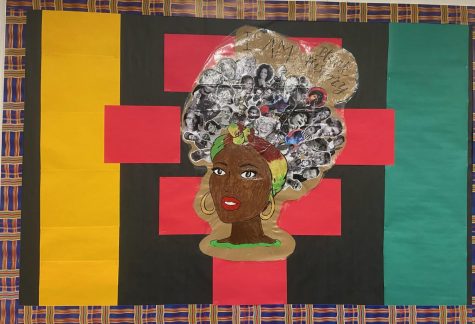“Little Women” adaptation takes on new perspective
Since the novel’s release in 1868, author Louisa May Alcott’s “Little Women” has received over 20 adaptations. Each adaptation takes on its own form, including multiple feature films, Broadway plays and even Japanese animations. The latest feature film adaptation was released on December 25; written and directed by Greta Gerwig, it provides a new perspective to the beloved tale of the March sisters while staying true to its roots in the original novel.
“I noticed a bunch of little nods to the book throughout the movie,” senior Jasmine Luethy said. “I thought it was really well done; [Gerwig] followed the plot line and the details very well.”
The plot follows the March family, a family of four sisters, through the years following the Civil War. It focuses on each of the sisters’ lives and aspirations—Jo, played by Saoirse Roman, dreams of a successful career as a writer, and Amy, played by Florence Pugh, studies painting in Europe and falls head over heels for family friend Laurie, played by Timotheé Chalamet. Meg, played by Emma Watson, learns to cope with the struggles of being poor, and Beth, played by Eliza Scanlen, wants nothing more than to play piano for her family. After splitting apart during young adulthood, the sisters are brought back together by a tragic accident, which causes them to reevaluate the importance of family.
“I think it was really important that it showed an all-female family,” sophomore Olivia Soble said. “It showed the connections that women really have with each other, and I thought they portrayed it in a really raw and realistic way.”
Unlike previous adaptations, Gerwig’s feature film centers around one character: Jo. The film opens with Jo sitting in an office in hopes of getting her short story published. She visits this office throughout the course of the movie as she develops her voice as a writer and her values as a person. The story comes to a close with Jo sitting in the same publishing office with a copy of her first novel—and a twist ending, the most significant break away from Alcott’s book.
“I think Jo’s story resonates with me because she does whatever she wants to do and is whoever she wants to be,” Soble said. “She showed so much strength, and that’s something that I see and want to see in myself.”
The film’s focus on Jo does not come at the expense of the other characters’ developments—in fact, each sister receives her own character arc. Rather than Jo being portrayed as superior, the differences between the four sisters are portrayed as components of their individuality and virtues. As Meg, a hopeless romantic, tells Jo, who plans to avoid marriage: “Just because my dreams are different than yours, it doesn’t mean they’re unimportant.”
“[Gerwig] did such a wonderful job of showing the characters’ goals and personalities,” English teacher Lauren Stenzel said. “For the first time, I was able to identify with the mother’s character. And the portrayal of Amy’s character wowed me because for the first time, I saw her as strong.”
Gerwig’s adaptation also plays with the concept of time. It uses frequent flashbacks and flashforwards to demonstrate how significantly the sisters’ lives change—and how they stay the same.
“The way that the movie skipped back and forth in time allowed it to play with some foreshadowing and literary elements that I thought were very unique and interesting,” Luethy said.
The most remarkable part of the film may lie in its original 1868 story: its unremarkableness. It is even written into the film that it does not portray a thrilling story—it simply portrays the four sisters’ domestic lives. But by doing so, it demonstrates a purpose that is rarely demonstrated: what it means to be a woman.
“There were so many things written into this adaptation’s dialogue that made the story applicable today,” Stenzel said. “It was such an interesting take on a story that had such an impact on the literary world.”








